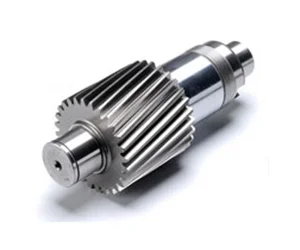Features of Helical Gears
- Teeth Design : The helical teeth are cut inclined to the gear's axis in such a way that they can form a helix. This provides the contact of many teeth at a time and thus allows the smooth transfer of power.
- Quiet Operation : The helical teeth cut slowly and therefore have reduced noise and vibration effects compared to spur gears.
- Efficiency : Helical gears are also effective for power transmission but are likely to create some form of axial thrust because of their teeth being set in an angled disposition.
- Materials : Normally made of steel, stainless steel, brass, or cast iron based on the purpose of the application.
- Helix Angle : The gear can be optimized to afford the utmost performance through the variation of tooth angle, enabling a balance between load-carrying capacity and smoothness.
Importance of Helical Gears
- Power Transmission : Helical gears are used for power transmission between parallel or crossed shafts. The running is smooth and noiseless.
- High Load Capacity : This design enables it to take higher loads as compared to spur gears, hence making them appropriate for heavy-duty applications.
- Versatility : They find applications in industry-vehicular transmissions, industrial machinery, and aerospace equipment.
- Durability : Helical gears have an element of strength in them and are long-lasting, especially if well-made.
Helical Gears find application in innumerable mechanical systems that are required to run smoothly, efficiently, and noiselessly. They become especially valued in applications requiring high load capacity and durability, like automotive transmissions and industrial machinery.
